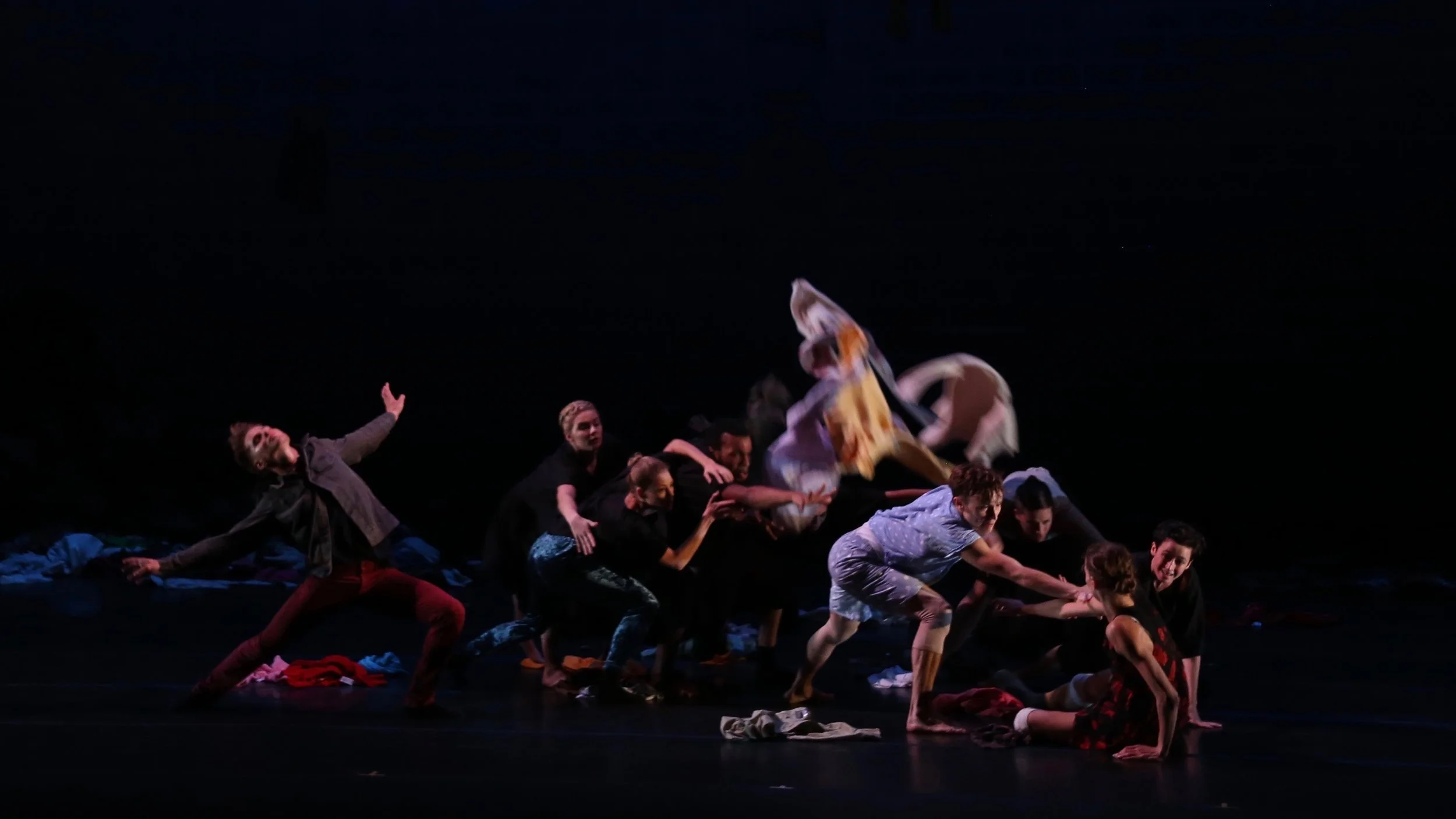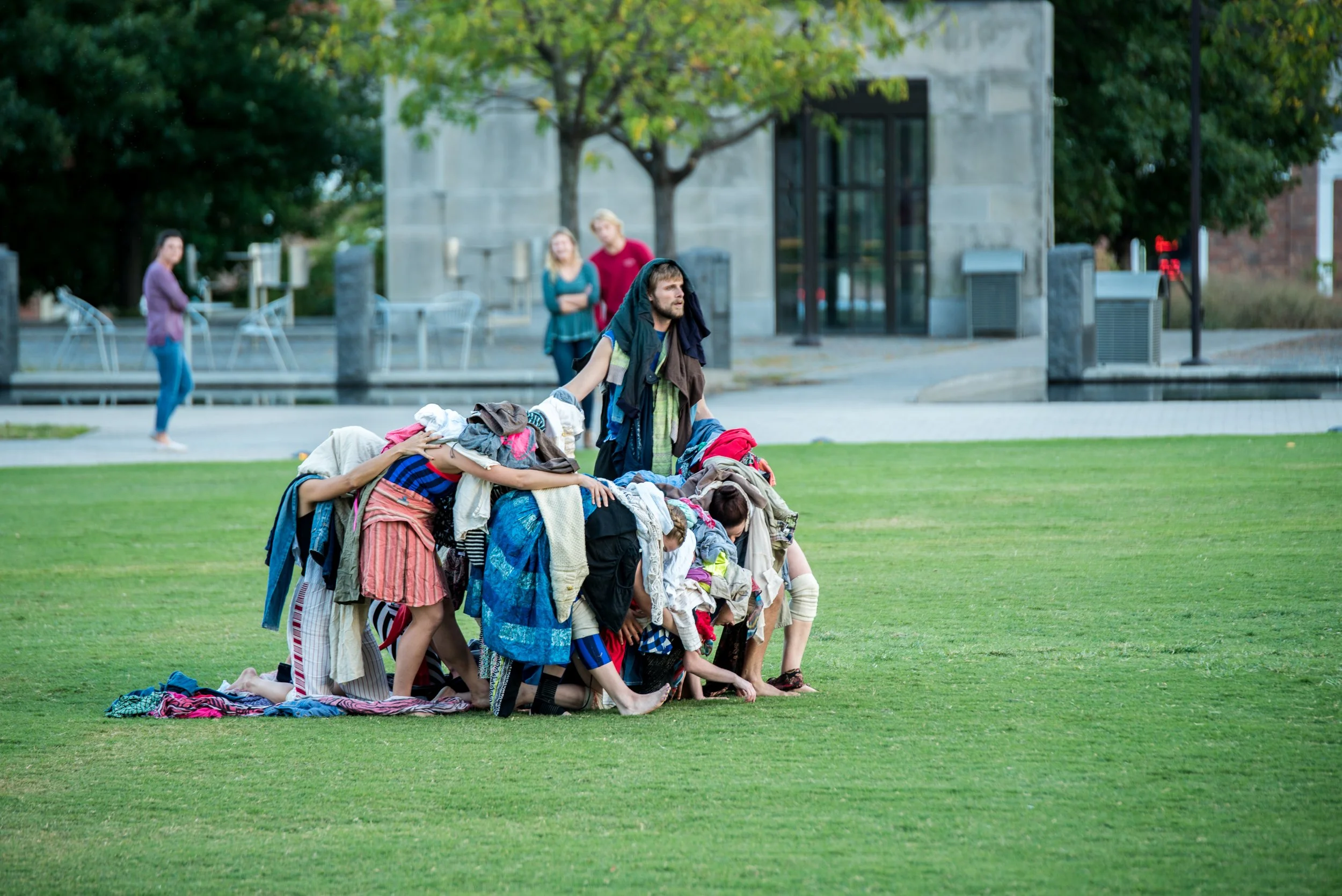choreography
BANNING BOULDIN
+
NEW DIALECT
collaborators
James Barrett, David Flores, Spencer Grady, Becca Hoback, Mary Ruth Isbell, Erin Kouwe, Rosemarie Mientka
Emma Morrison, Sarah Salim, Rebecca Steinberg, Curtis Thomas, Lizzy Vasuta
Theatrical premiere, Tennessee Performing Arts Center, November 2016
Perry Mansfield’s 20th Annual New Works Festival, June 2017
Outdoor pop-up installation series, Nashville, 2017-2018
T H E A T R I C A L
V I D E O
C H O R E O G R A P H E R ‘S
N O T E
New Dialect is a collective of artists who are black, white, indigenous, Latinx, Moroccan, Filipino, Jewish, queer, straight, cisgender, and gender nonconforming. We have each experienced privilege and discrimination due to the colors of our skin, our gender identities, our sexual orientations, our cultures, our beliefs, and how we present.
To create HEAP, we wrote personal statements about who we are, what we hope, and what we fear. We also researched news headlines, social media, scientific articles, religious texts, and other forms of literature for words that we believed were true, for editorials that were manipulative, for commentary that attacked people “like us,” and for posts that we identified with.
We compiled these source materials and our own writings to compose abstract poems that tell each artist’s story of self-defined and socially-assigned identity.
The imagery of our written words became the source material for developing HEAP's movement language, partnerships, and choreographic tableaus. The piece was collabortively composed and originally premiered at TPAC in 2016. In 2017, we re-imagined the theatrical version to create 6 different pop-up installations throughout Nashville, by tailoring the choreography to a variety of public spaces and creating opportunities for audience participation.
As a process, HEAP allowed us to engage in meaningful conversations as a collective striving to embrace our differences. With our performances, we aim to communicate that people who experience life differently can come together with deep respect for one another.
The set for HEAP was inspired by the visual artist Emily Clayton and her dance film The Dig, which was filmed in a thrift store in Savannah, Tennessee. The piles of clothes on site and onstage serve as both our mise-en-scen and a metaphor for us. With each shirt, skirt, and jacket, we try on and cast off social norms, stereotypes, otherness, oppression, and the expression of our true selves.
- Banning Bouldin
P U B L I C S Q U A R E
V I D E O
C H U R C H S T R E E T
V I D E O
R E H E A R S A L
V I D E O
Heap received a Creation Grant from Metro Arts
Clothes used in HEAP were borrowed from Goodwill Industries of Middle Tennessee





